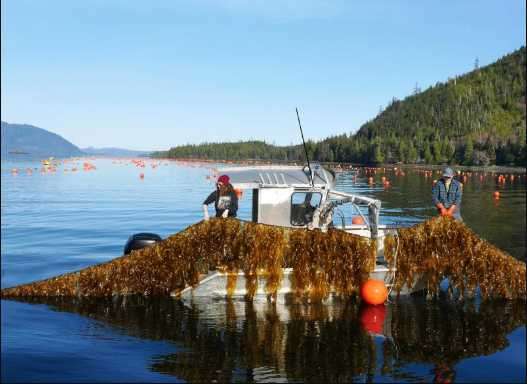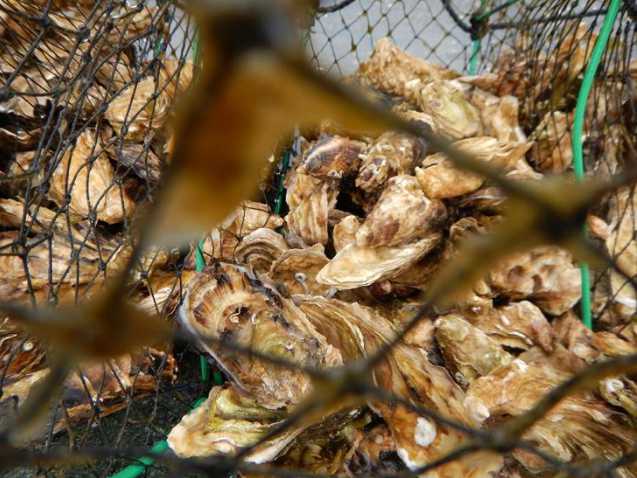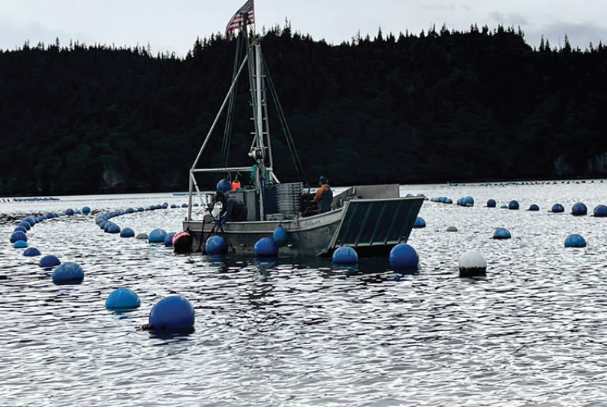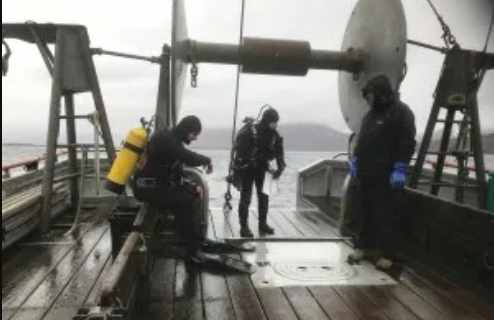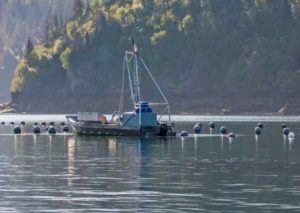
Alaska Sea Grant recently surveyed the Alaska mariculture industry to shed light on the effects of the COVID-19 pandemic and response on their businesses in February and March. Survey respondents reported that revenue was down, with 43 percent reporting losses of more than half of their revenue. More than a third had laid off employees.
COVID-19-related health mandates around the country have temporarily closed nonessential businesses and imposed travel restrictions. While fisheries and aquaculture businesses in Alaska are allowed to continue operations with health safety precautions, closures in restaurants and tourism-related businesses around the country have reduced the demand for seafood.
Mariculture—the cultivation of shellfish and aquatic plants—is a fledgling industry in Alaska with a current value of around $1 million, with sales in 2019 of 1.8 million oysters, 112,000 lbs of seaweed, and smaller amounts of other shellfish species. As of March 2020, the Alaska Department of Fish and Game reported active permits for 57 aquatic farms, 4 hatcheries, and 8 nurseries, with permits predominantly covering Pacific oysters, geoduck clams, ribbon kelp and sugar kelp. While small compared to many sectors in Alaska, efforts are in place to grow this industry to $100 million in the next 20 years. Mariculture has great potential to provide economic diversification in Alaska, particularly in small rural communities.
As the summer growing season approaches, oyster farmers are concerned that a shortage of labor could lead to the loss of millions of oysters to predation and fouling. Farmers reported the biggest hits to their business were restaurant closures (81%), followed by labor challenges (52%) and reduced opportunity for export (48%). Concerns further down the road include whether or not the economy will rebound, restaurants will reopen, and customers will return with the “previous enthusiasm for new healthier/more sustainable products,” as one survey respondent said.
[content id=”79272″]
Farmers struggle over “whether to invest in business expansion, or hunker down for the next year and try to maintain extra savings,” according to one respondent. Another respondent claimed that some of the impacts from COVID-19 could be minimized if the state ferries were in operation. “Without the ferries, we cannot afford to ship products, import goods, or plan for future transportation.”
While the oyster industry is established in Alaska, seaweed farming is in its infancy, and farmers are concerned whether their operations can survive. “Innovation on farms and in processing is extremely difficult without expertise from outside Alaska. Seaweed is a nascent sector that needs lots of R&D [research and development] to mature and expand,” a respondent wrote.
Even with the unknowns, Julie Decker, Chair of the Alaska Mariculture Task Force, believes that “growth of the mariculture industry can play an important role in Alaska’s economic recovery from the COVID-19 disaster.” The vast majority of farm products are harvested and sold in Alaska during the spring and summer, so the next few months will be important indicators of the future of the industry.
The results of this survey will be used to identify the economic impacts of COVID-19 to guide response efforts by Alaska Sea Grant, National Sea Grant, and the NOAA Office of Aquaculture.
Source:

